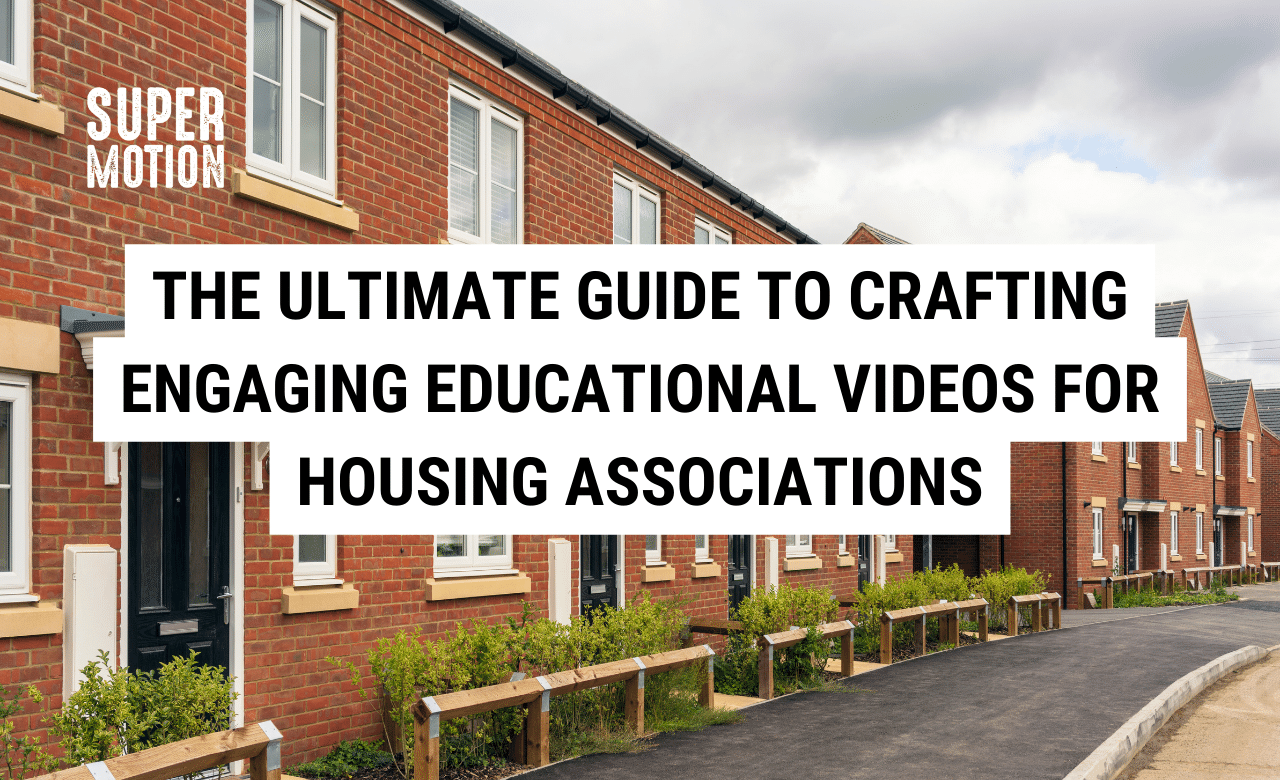The Ultimate Guide to Crafting Engaging Educational Videos for Housing Associations

In the digital landscape, educational videos are a key tool for engaging audiences. Housing Associations need to master educational video to reach and educate the communities living in more than 4.4 million social housing properties in England.
This guide is for Communications and Marketing Managers in the Housing Association sector, offering a blueprint for creating informative, accessible, and engaging videos.
Understanding Tenant Demographics to Tailor Your Videography
Effective communication hinges on knowing your audience. Social housing is home to diverse communities. With tenants from various backgrounds and ages, your content strategy needs to be nuanced.
The Socioeconomic Mosaic of Social Tenants in England
England’s 4.4 million social homes house diverse individuals and families. Tailoring educational videos to resonate with viewers across various socioeconomic backgrounds, preferences, and needs is key to cutting through the noise.
Highlighting Financial Literacy and Community Support
Financial education is vital, particularly for the 74% of social renters without savings. Housing Associations can help by equipping tenants to manage finances better. Tailor videos to tackle common financial challenges, providing simple, actionable advice to make a real impact.

Crafting Content That Educates and Entertains
Educational content can seem dull, but by incorporating captivating stories inspired by the entertainment industry, you can make learning enjoyable and engaging.
Diverse Storytelling for a Diverse Audience
Variety is key in storytelling, reflecting the diverse tapestry of your community. Sharing success stories from various backgrounds is not only about diversity representation but also a powerful tool to inspire and motivate.
How To Make Complex Topics Relatable
Inclusion and relatability are crucial for tenant engagement. Use diverse characters and situations to simplify complex topics without diminishing their significance. By using real-life scenarios, bridge the gap between abstract concepts and viewers’ everyday lives.

The Art of Simplifying Without Talking Down
Explaining complex subjects in an accessible way is an art. By using clear language and simple explanations, you make sure your educational videos are inclusive and easy for all to understand.
Avoiding Jargon for Universal Understanding
Using insider language can exclude a large part of your audience. Opt for plain terms to make your content universally accessible, fostering broader conversations and understanding among tenants.
Speaking the Language of Housing and Finances
When discussing housing and finances, avoid complex terms. Use clear language to make content accessible to all tenants, regardless of background or education level.

Visuals that Transcend Language and Culture
In a multicultural society, visuals are key to connecting with a diverse audience. Use inclusive and representative visuals to bridge language and cultural gaps, fostering a global community in your sector.
Inclusive Visuals to Represent Many
Inclusivity is not just a buzzword – it’s a responsibility. Depict the diversity of your tenant base with a variety of actors and scenarios. Your video should reflect and celebrate the range of people in your sector through setting, casting, and graphic design.
Leveraging Animation and Educational Graphics
Educational content is often best conveyed visually. Using animation or infographics simplifies complex information, making it engaging and universally understandable, regardless of the audience’s background.

Encouraging Interaction and Gathering Feedback
Your video’s engagement goes beyond playbacks — it’s the start. Engage viewers with calls to action and feedback to turn them from passive to active participants, building community and ownership.
Calls to Action That Inspire Involvement
Every video needs a clear and compelling call to action. Encourage viewers to visit a resource hub, take a financial management course, or share their thoughts. Your calls to action should engage and support your audience.
Turning Feedback into a Two-Way Conversation
Feedback isn’t just about improvement; it’s a chance to learn and grow with your tenant community. By making feedback a two-way dialogue, you refine content and connect with your audience, showing their voice matters.

Conclusion
In social housing, educational videos do more than share information — they empower and support a diverse community. By following our guide, Super Motion believes you can create invaluable resources that make a difference to many lives.
Ready to shift from passive to engaging stories? Book your free 30-minute strategy call with Super Motion using the button below.
